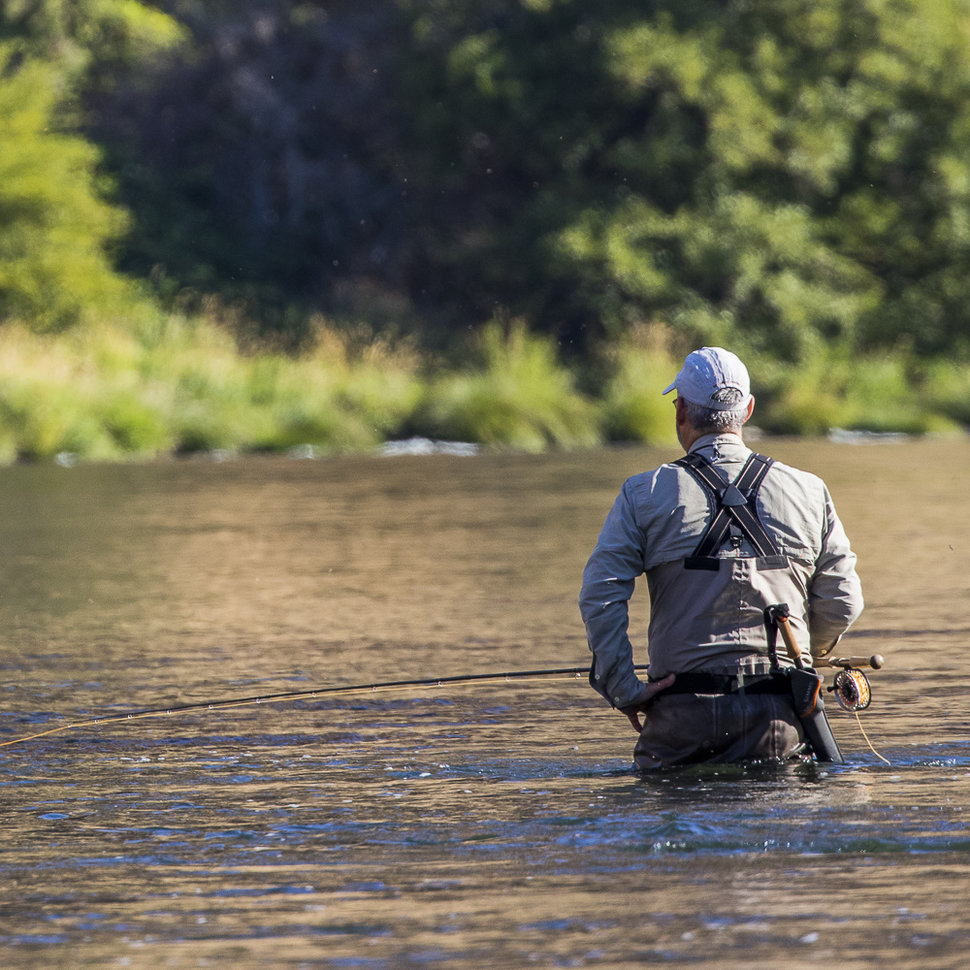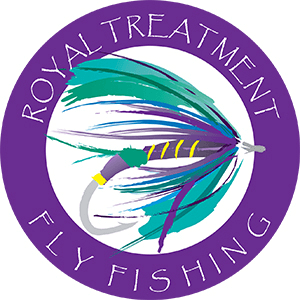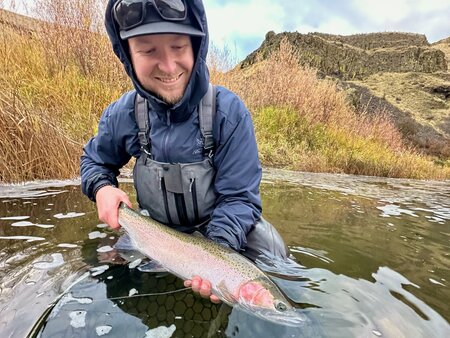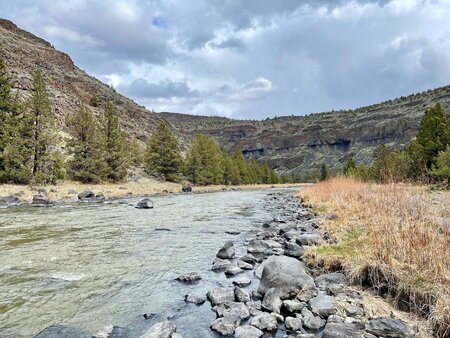Checking the Temps

The thermometer is your friend. No, not that vintage Hire's Rootbeer model you have nailed to the garage that's been stuck in the 80s for a few weeks. I'm talking about that handy little stream thermometer that you carry with you, but never use. You really should get to know it better. It could be a lifesaver, for fish anyway.
With hot being the word of the weekend, I thought perhaps I should share a little insight from my group of friends and water whisperers on the subject of water temps and fish. Water temperatures start climbing when sunbaked watersheds trickle to the sea. Thermo-blocks slow migratory runs, and local salmonids get just plain grumpy. This issue hasn't yet reached a critical level across the state, but I would be remiss if I didn't do my part to educate and inform.
While putting together this simple guide to safe, warm water fishing practices, my goal is to inform you how and where you can find waters that still provide water cool enough for angling, without harming the population of finned residents. Note that conditions do change, and it is possible to see a very rapid cooling or warming of a particular stream dependent on the factors that influence that watershed.
First, we'll start with the basics. For salmonids to survive a return home, water temperatures need to remain below 68 degrees Fahrenheit. This number, from my brief research, will allow upstream migration of anadromous salmonids ( Chinook, Steelhead) that are genetically prepared to survive warmer flows. Some salmonids (like sockeye) are not as robust and will not do as well in these conditions. It's imperative to note the survival of all of these fish at this temperature is dependent on the lack of external stresses, which means simply, not fighting for their lives on an end of a line or being chased by a predator. To recap, fish can survive 68-degree water, but only if we leave them alone. Water temps over 70 can be lethal and over 80 terminal. The die-off we saw several years ago in the Willamette was an example of temps in the terminal range.
As I said earlier, conditions do change, and as summer gives way to fall, our days shorten up, while our nights grow longer. Longer nights allow for more overnight cooling providing much better fishing conditions in the early hours of the day. For summer Steelhead, that "happy place" is between 50 and 60 degrees. Many of the anglers I contacted about this article pull the plug on any interaction with Steelhead at 65 and even then take great care to land and release promptly with no removal of the fish from the water. In other words, Keep Fish Wet.
Trout have a similar set of numbers dialed into their thermostat that makes them happy and willing to participate in our angling efforts. 50-63 degrees seems to be the sweet spot, as observed by my good friend and Trout guru, Brian Silvey. While temps below 40 and above 70 are not conducive to successful Trout fishing, fishing in those warmer temps put fish in danger of not surviving an encounter. If the water's warm, Heydo no harm.
Now, all of this doom and gloom does not mean you have to hang up your fishing kit and go swing golf sticks. Not at all. What it does mean is that we all need to be aware of the conditions and adapt. Here are ten tips to get you through the summer heat.
- Carry a thermometer and use it. Knowing the water temp will add to your success and save fish.
- Fish early in the day when the water is cooler and take the afternoon off if temps break into the danger zone over 65 degrees.
- Fish higher up in the watershed. Rivers and streams warm up as they flow to the sea. Well-forested rivers stay cooler than waters flowing through an open landscape. Explore new water.
- Tailwater fisheries provide cooler water conditions as you move closer to the dams that create them.
- Try lake fishing. Many of our Cascade lakes stay much cooler in the summer months as they are spring-fed.
- Explore the coastal waters off beaches and jetties, or visit Puget Sound.
- Utilize the USGS website to track flows and temps.
- Maybe succumb to the carp and bass craze.
- Have fun and learn something new this summer.
- Share this information with others.
Warm weather is also hard on anglers. Sunburn and heat stroke are dangerous and something to be avoided. Advanced sun protection is comfortable, affordable, and worth adding to your wardrobe to prevent severe burns. Sunscreen isn't enough when overhead sun and reflecting waters combine to try and bake you to a crispy crunch. Sun gloves, hats, and long-sleeve shirts are a necessity. I've personally grown fond of the "hoody" style sun shirts as they keep my neck and ears covered when it gets toasty.
When temperatures approach the century mark, wading in cooler water lulls us into thinking we've been downing enough liquid, but most often, that is not the case. Proper hydration is essential, and water is your best source. To make sure I always have plenty of water on any fishing trip, I carry 2-Grayl Water Filtration Bottles in the 4Runner and pop one in my pack when hitting the stream. Having a lightweight source of unlimited drinking water is invaluable.
Other refreshments may quench your thirst, but might not be replacing the electrolytes your body needs. Carrying a few bottles of your favorite sports drink is an excellent idea in addition to pounding water. My personal choice is Skratch Labs Lemon & Lime powder. It's lightweight and can be mixed in seconds. (Tip: Don't mix ANY powdered sports drinks in a water filtration bottle. You laugh, but I know someone...) Jennifer and I packed Skratch on our trip to Mexico this year and use it on all of our bike rides to stay hydrated. It's natural, vegan, non-GMO, Kosher, Gluten and dairy-free and Made in the USA. Oh, and it tastes good too.
The important thing to remember when temperatures climb is to not only take care of our fishery resources, but take care of yourself too. Park yourself in the shade and take a nap. It will do both good.
I almost forgot... the mini-van thing? That was just to get your attention because I know you have nightmares about that. Don't worry, mini-vans aren't all that bad. Maybe add a roof rack, big tires, and call it a mini-adventure van...




